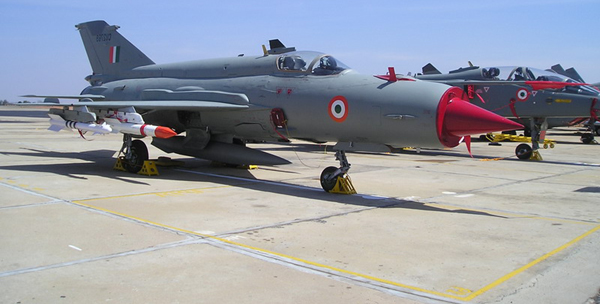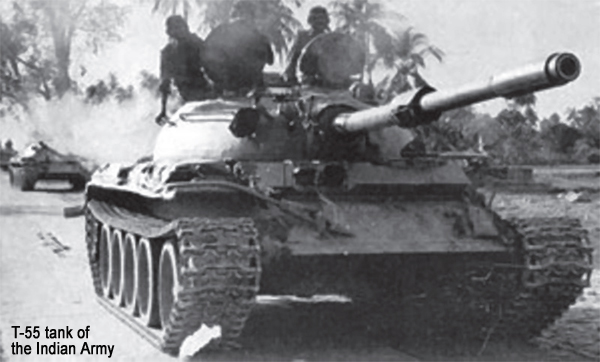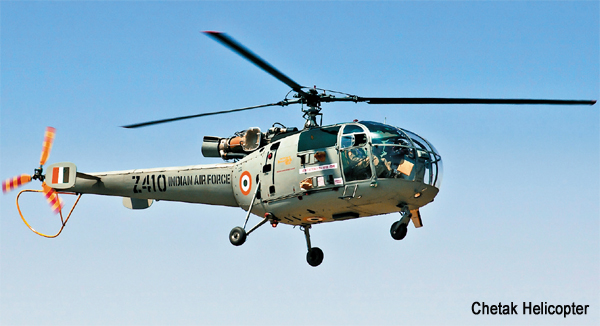|
And then, on March 7, just as we were ready for
printing, a shocker came in of a third accident,
involving destroyer “Kolkata” at Mazagon
Dock Ltd. (MDL) shipyard in Mumbai where it was
being readied for delivery this year to the Indian
Navy. One officer, Commander Kuntal Wadhwa who
was assigned to test various systems on board
the ship, died in a burst of carbon dioxide that
leaked either due to poor quality of a control
valve or poor workmanship.
On March 8-9 midnight, we pulled out the magazine
from the press as there was still another report
of an accident at DRDO’s nuclear submarine
building facility – known as Ship Building
Centre (SBC) – in Vishakhapatnam. A couple
of nuclear attack submarines – exact number
not known – of the INS Arihant class are
apparently under construction there but fortunately,
the mishap was NOT on board any of the subs. The
mishap involved a pressure tank whose lid flew
off during testing, and killed a civilian worker.

The Navy in this case had nothing to do, and
DRDO said in statement that “the submarines
are safe and the accident does not adversely affect
the project.”
Nonetheless, as there have been around a dozen
incidents involving Indian Navy vessels –
not all of them serious – Navy Chief Admiral
DK Joshi had taken moral responsibility after
the Sindhuratna mishap and resigned.
He only exemplified the courage of convictions,
the courage of responsibility that perhaps all
officers and men of the Indian armed forces proudly
imbibe. Adm Joshi need not have resigned. Nor
would it be right for any one to demand the scalp
any other officer or the defence minister.
The root cause lies in the politics of allegations
post-Bofors, the obstacle course that it has set
for acquisitions ever since, the chalta hai (doesn’t
matter) attitude we generally have, the lack of
quality control, and according to a senior officer,
the curse of tobacco afflicting a large number
of industrial workforce, particularly in public
sector organizations.
The systems are getting increasingly hi tech
and precision, and the moment one leaves even
a screw a little less tight or a little over tight
than required, the seeds of an accident are sown.
Most of us, the civilian workforce particularly,
do not have the mindset for working properly.
That is a curse that is hitting India every
where.

As for acquisitions, the system is slow and
it generally takes five to seven years to buy
something. It is another matter that by the time
we get it, that equipment is perhaps already old
and succeeded by a newer generation. The armed
forces still have to go for it. The country buys
an older system and regrettably, at higher costs
as the manufacturers charge you for holding old
technology.
It would be appropriate to quote Army Chief
Gen VP Malik as saying before the 1999 Kargil
War that “we will fight with what we have.”
His statement clearly indicated the poor state
of the Indian Army’s inventory.
Did he have a choice?
The armed forces indeed have fought with whatever
they are given, and still distinguish themselves.
Besides the poor work culture, the fault lies
with politicians the most, for playing politics
with the defence of the country.
Mr VP Singh, who succeeded Mr Rajiv Gandhi as
Prime Minister, made two allegations over the
1986 acquisition of Bofors FH 777 guns: One, that
bribes were paid in the deal with its Swedish
manufacturer, and two, the gun was of poor quality,
fired backwards and killed own troops.
The second charge about quality has been proved
a lie, and after a quarter century, it is still
the best gun with the Indian Army. The gun was
effectively used to decimate Pakistani army positions
dug into Indian territory when the NDA was in
power.

Nonetheless, as for the first allegation over
bribes, there is no clear official position although
both the Congress-led UPA and BJP-led NDA have
been in power over the last 20 years. The allegation
is an allegation till then, and may or may not
be true. The need of the hour is for the top leaders
of this country to get together, tell the truth
to the people, and move on to strengthen the armed
forces and the country.
To recall Gen Malik’s point, consider what
the Indian Army, Navy and Air Force have or do
not have. Their wish lists do not call for 22nd
century weapons but contemporary and futuristic
systems to replace the old and outdated, mostly
Soviet-vintage of a quarter century systems.
Consider also that the Indian Air Force had
to train rookie pilots on a basic trainer, HPT
32, that had zero aerobatic capability. Worse,
its maker, HAL could never correct a fuel supply
problem which led to crashes and the country lost
some 20 pilots, including two highly experienced
instructors in 2009. Did we need that to happen
to bury this aircraft?
IAF has to ensure that its pilots flirt with
flying, and are daredevils. But if the system
cannot give the young officers even basic aircraft,
then those in authority have to be accountable.
IAF also lost another 20 pilots as it took a quarter
century to decide on an advanced jet trainer and
Mig 21s had to be used for basic jet training
for rookie pilots.
Irrespective of their party affiliations, all
governments have done something and also not done
enough. If the bureaucracy is slow, so are the
leaders as they fail to stimulate the decision-making
process.
Replacement of any system, tank, aircraft or
ship, which has done about 20 years, should be
built in the acquisition process. There should
be timelines and responsibilities fixed for lack
of decision-making in the political, bureaucratic
and military structures. From proposal to sanction,
trials, negotiations and acquisition, the process
to buy a system should not take more than three
years.
In all fairness, it has also to be kept in mind
that all things do not go wrong because of delays
or wrong decisions in the Ministry of Defence
as is generally believed or alleged.
At least in two cases I know of from Army officers,
poor quality shoes and thermal imagers were selected,
by the Army officers assigned to do their selection.
When the problem was reported to the Defence Ministry
in the recent years in fact, immediate remedial
action was taken.
A lot of purchasing is done by armed forces
officers authorized to do so with no involvement
of MoD in the decision-making. It would be unfair
to blame the civilian officers for their lapses.
Old timers recall that the maximum modernization
of the armed forces and intelligence organizations
took place when Mr Rajiv Gandhi was in power.
His successor government blocked the operations
of Indian Airlines Airbus 320 aircraft for more
than a year, stopped the modernization of the
armed forces, and put so much fear in the hearts
and minds of bureaucrats that to date, they are
not willing to take timely decisions.
That fear is the curse of the modernization
process.
It has been Pakistan in fact which has triggered
India into action, by occupying Kargil heights
leading to the war 1999 and then by terror attack
on Mumbai in 1998. For the Kargil War, India had
to import even shells for Bofors. The Swedish
company had transferred technology to make the
guns in India, in the first big Transfer of Technology
(ToT) programme but nobody has had the courage
to use it to the country’s advantage.
Only now, the blueprints for manufacturing the
gun have been dug out from the cupboards of the
Ordnance Factory Board (OFB) and prototypes are
out for testing this year.
Cause: The Fear of Unfounded Political Allegations.
Most officers also say that if they take timely
or speedy decisions, questions are immediately
raised about their integrity. It is a strange
culture of fear.
The Army needs new helicopters, tanks, guns,
armoured personnel carriers; IAF needs new technology
helicopters, combat jets; radars and midair refuelers,
and Navy needs new helicopters and submarines
as of yesterday. Two common key requirements for
all the three Services are night-fighting capability
and defensive and offensive missiles.
It needs to be mentioned here that DRDO has
commendable achievements in missiles in the recent
years.
Delays breed corruption and result in poverty
of quality. That costs the country both lives
and money in accidents. When an officer delays
a decision, or delays meeting a businessmen he
eventually has to, it is taken as a signal that
bribes need to be paid.
Timelines, timely decisions, and quality control
are the requirements of the day. They would lead
to better products, their timely availability,
lesser costs in acquisition and maintenance, and
better utilization.
It is time for the politicians from all parties
to decisively let go VP Singh’s Bofors ghost,
get together to speed up the acquisition process,
enforce discipline and inspire a work culture
of precision production in public and private
industries. Responsibility should be built in
and those who have authority but shirk decisions
should be sacked for delays, not for timely or
speedy decisions.
Also, senior civilian officers should be encouraged
to join institutions like the National Defence
College (NDC) and only those who have had some
association with the armed forces, should be given
assignments in the Ministry of Defence.
Old equipment and callous attitudes need to go.
So does the fear of being caught on the wrong
foot for being efficient.
|